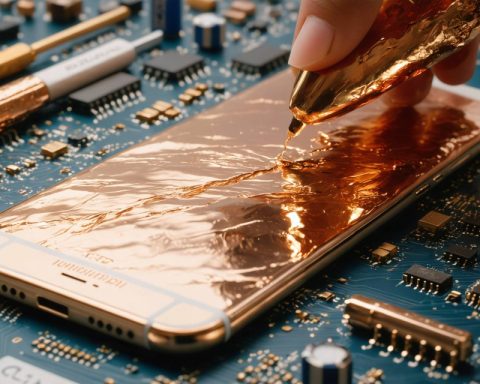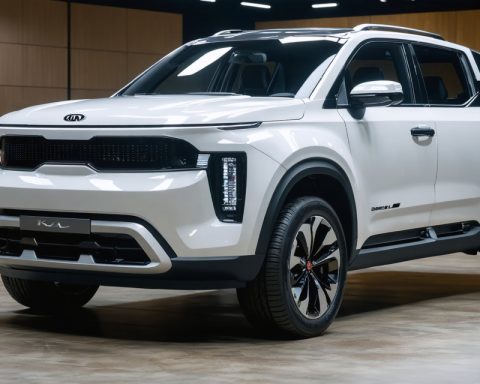The U.S. Marine Corps has ushered in a thrilling new chapter with the reactivation of the Marine Fighter Attack Squadron 251, popularly known as the “Thunderbolts.” After more than four years in hiatus, the squadron has soared back into the spotlight with its first F-35C Lightning II jet arriving at Marine Corps Air Station Cherry Point in North Carolina on September 17, 2024.
Symbolizing innovation and power, the aircraft dons a striking paint scheme complete with a vivid orange lightning bolt against a deep black tail, alongside bold “MARINES” and “VMFA-251” markings. The intricate design captures the spirit of the Thunderbolts, who reengage their operations as part of Marine Aircraft Group 14, under the 2nd Marine Aircraft Wing.
In the words of the squadron’s commanding officer, this transition marks a pivotal shift as VMFA-251 embraces the advanced capabilities of the F-35C—a fifth-generation stealth fighter known for its range and cutting-edge technology. The goal is clear: gain initial operational capability swiftly and ensure the squadron is primed for full operational status, making them ready to support national defense when called upon.
The Thunderbolts, now the first on the East Coast to operationalize the F-35C, join the Marine Corps’ growing fleet of advanced aircraft. Their reconstitution strengthens the USMC’s aerial dominance, especially alongside the F-35B, as they enhance Marine Air-Ground Task Force’s agility and combat prowess on a global scale.
Exciting Return of the Thunderbolts: A Closer Look at the F-35C Era
In a bold move highlighting technological advancement and strategic readiness, the U.S. Marine Corps has reestablished the Marine Fighter Attack Squadron 251, also known as the “Thunderbolts,” after a four-year hiatus. This reactivation is marked by the squadron’s acquisition of the F-35C Lightning II jet, emphasizing the cutting-edge developments in military aviation.
Features and Capabilities of the F-35C
The F-35C Lightning II is a marvel of modern military technology. As a fifth-generation stealth fighter, it brings enhanced stealth characteristics, superior radar systems, and the ability to integrate seamlessly with other forces. Its range and agility have been significantly improved to provide unmatched air superiority. The F-35C is specifically designed for aircraft carrier operations, offering increased range and payload compared to its predecessors, making it a vital asset in safeguarding national interests.
Innovations and Technological Advancements
One key innovation in the F-35C is its enhanced stealth capability, which includes advanced radar-evading materials and design. The jet’s avionics suite provides pilots with unparalleled situational awareness, fusing sensor data from across the battle space to deliver real-time information that informs tactical decisions.
The futuristic cockpit design features a panoramic touchscreen display, which centralizes all flight data, providing a streamlined user interface that enhances pilot performance. Furthermore, the F-35C is equipped to handle electronic warfare, intelligence, surveillance, and reconnaissance missions, showcasing its versatility on multiple fronts.
Security Aspects and Strategic Impact
The reactivation of VMFA-251 and their deployment of the F-35C signifies a critical enhancement in the Marine Corps’ aviation capabilities. The integration of this advanced aircraft within the 2nd Marine Aircraft Wing improves the U.S. military’s ability to project power across the globe and supports multi-domain operations, which are increasingly crucial in modern warfare.
Pros and Cons of the F-35C
Pros:
– Advanced stealth features and superior avionics.
– High adaptability for various missions.
– Enhanced range and payload capacity.
– Designed for aircraft carrier operations.
Cons:
– High operational and maintenance costs.
– Complex technology requires extensive pilot training.
Future Predictions and Trends
The Thunderbolts’ transition to the F-35C suggests a broader trend within the U.S. military toward adopting advanced multirole fighters. This shift is expected to continue, with further integration of artificial intelligence and machine learning in military aviation. As technology progresses, these aircraft will likely evolve to incorporate more autonomous functions, enhancing mission efficiency and reducing pilot workload.
Sustainability and Environmental Impact
The F-35C program also brings attention to sustainability in military operations. Efforts are being made to reduce the environmental footprint of these advanced aircraft through improved fuel efficiency and minimized emissions during operations.
For more insights into military aviation advancements, visit the official U.S. Marine Corps website.












